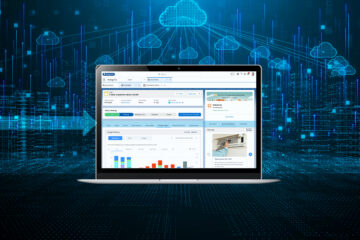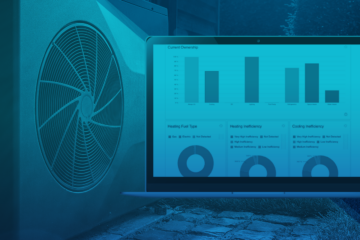As VP of AI for Target Corporation, Ashwin Rao describes his mandate as identifying the ideal problems to solve with AI and developing the algorithms to do so accurately and efficiently. With that in mind, he says the operational challenges best-suited for an AI solution in the retail segment also present significant opportunities for the utility industry, including using AI for demand forecasting, personalization and solving strategic business problems.
AI for Demand Forecasting
Rao says demand forecasting is a fundamental problem for businesses across industries.
“In a retail company like Target, we have 2,000 stores and we sell an average of 100,000 products in each store,” he explains. “You have to predict how many units of each product will be sold in each store on a daily basis. That’s a hard problem to solve. For products that are fast sellers, the demand is pretty predictable. But for most products, there are many factors at play that make it very complex to forecast — demographics, weekday vs. weekend behavior, weather, the state of the economy, or even if a celebrity mentions a product.”
Though Rao says it’s virtually impossible to develop a completely accurate model for predicting demand for a slow seller, in a specific store, on a specific day, AI does make it possible to build a framework to deliver a network-wide demand forecast.
AI is an essential tool in forecasting network-wide and regional energy usage and peak demand as well. Fuel switching, renewable adoption, climate change and extreme weather events are making it both more challenging and more important than ever for utilities to forecast peak demand and ensure reliability. Bidgely’s UtilityAI platform delivers the actionable intelligence utilities need to make it possible.
“The answer is analytics, especially if we want to drive electrification — which will not only increase some of the peaks, but also make outages even even more important to mitigate because there will be more reliance on the electricity system,” says Lon Huber, Vice President of Rate Design & Strategic Solutions at Duke Energy. “Duke is being proactive in planning how to facilitate supply and demand so that energy remains affordable and we’re able to maintain or actually improve grid reliability and resiliency. The key is unlocking different customer segments and understanding what is driving peaks and the impacts on both the local grid and the bulk grid. Then, analytics further informs the best engagement strategies to reach customers and pinpoint programs to realize maximum impact.”
Huber says he works closely with the load forecasting and Integrated Resource Planning teams to ensure that the analytics are enabling coordination and operational alignment, such as examining how customers’ response to rates will impact forecasting or how new product bundles, like a smart thermostat control program, are integrated into both the load and demand forecast.
AI for Personalization
The science of personalized recommendations is an important AI problem to solve, not only for Target but for any B2C company, Rao emphasizes.
Target’s algorithms start by studying catalog information and detecting patterns between, for example, certain types of apparel and certain types of accessories. Then, the algorithm enhances those basic patterns with the nuances of each individual shopper, because what works for one person may not work for another. The AI-generated intelligence is also seeded by human experts. It’s this combination of intelligence that informs the retailer’s purchase recommendations for specific customers as they shop in its online store.
The lesson utilities can learn from Target’s approach is that relying upon generic, one-size-fits-all marketing and static online marketplaces is insufficient. Major global brands like Target, Amazon and Netflix have forever changed customer expectations by harnessing the power of customer browsing habits and purchasing behavior to tailor recommendations and greatly improve a customer’s overall experience. As Utility Dive pointed out, “For [utility] marketplaces to be beneficial to utilities and end customers, it is in the best interest for utilities to go beyond offering an online product catalog, and instead take advantage of their unique role as energy management allies.”
In Dec 2020, Hydro One introduced myEnergy Marketplace — an online commerce portal built on Bidgely’s Smart Shop™ platform. The myEnergy Marketplace offers expert advice, insights, and information to help guide Hydro One’s customers in their home product buying decisions. Through the marketplace, customers also have access to exclusive retailer and manufacturer rebates.
“After some deliberation, we made the decision to offer a smart energy efficiency marketplace to our customers that would deliver more than insights, explained Seung-Yoon Lisa Lee, Director of Customer Solutions at Hydro One. “We could help our customers take action using insights we’ve developed about their energy use by directly connecting them to solutions. It’s a natural part of our ongoing commitment to serve as a trusted partner and to provide customers with the tools and products they need to make more informed energy choices.”
Augmented AI to Solve Business Problems
Rao says his main message for utilities is that augmented AI — which combines human and machine intelligence to improve decision-making and, by extension, the outcomes of actions taken as a result of those decisions — should be the foundation for examining business problems and strategic planning. It’s the combination of data analytics and human expertise, he says, that yields superior operational results across functional areas.
NV Energy was one of the first utilities to deploy AMI smart meters to its entire customer base. Since then, the NV Energy has worked with Bidgely to leverage that disaggregated data together with survey answers, home audit results, call center outcomes and other data and human inputs that are reflected immediately in each customer’s record and create what NV Energy terms a “single source of truth” — a repository of augmented AI that all NV Energy business units rely upon to improve operational efficiencies.
For example, in January 2018, the utility worked with Bidgely to introduce a new In-Home Energy Assessment program. The online, tablet-based tool replaced its legacy paper and pen home audit program that required auditors to enter a home visit “blind.” The UtilityAI-powered In-Home Energy Assessment conducts as much analysis as possible in advance, providing auditors with disaggregation insights that they use to identify any potential issues and validate assumptions before they enter a home. Then, the platform guides the auditors through essential home survey data fields, while also allowing the human expert auditors to add custom tips and recommendations based on their in-person findings and experience. Once complete, the audit results are automatically synced with the customer’s account to ensure each customer record is always up-to-date and available to inform utility-wide operations. The result has been shorter audit completion times, lower operational costs and better CSAT scores driven by auditors’ more proactive and augmented approach.
As a guiding philosophy, NV Energy has used In-Home Energy Assessments and a full range of other UtilityAI solutions to provide quantitative inputs for multiple NV Energy business units. This approach has paid dividends across the utility, simultaneously streamlining marketing efforts and expenses, maximizing the energy savings earned per paid incentives, and enabling grid optimization through load shifting.
As utility leaders such as Duke Energy, Hydro One and NV Energy demonstrate, the energy sector can benefit from proven retail AI strategies, including leveraging AI to improve demand forecasting, personalization and solutions for strategic business problems. If you’d like to hear more from Ashwin Rao about what energy companies can learn from Target, watch the on-demand video of his presentation from Engage 2019. To read case studies and proof points of how utilities are achieving key objectives using their existing data, read the UtilityAI Platform Whitepaper or connect with our team.


